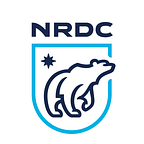Introduction
It’s Time to Act
“No challenge poses a greater threat to future generations than climate change.”
— President Obama’s proposed 2016 budget
Rising sea levels. Raging storms. Searing heat. Ferocious fires. Severe drought. Punishing floods.
This is what climate change looks like. It threatens our health, our communities, our economy, and our security.
It is the greatest environmental threat of our time.
And those threats are growing more urgent. Last year was the hottest globally since record-keeping began in 1880. And 14 of the 15 hottest years have occurred in this century.
In response to the dangers, the U.S. Environmental Protection Agency in June 2014 proposed the first-ever limits on the more than two billion tons of carbon dioxide spewed into the atmosphere each year by power plants — the largest source of U.S. greenhouse gas emissions.
The Clean Power Plan — the centerpiece of President Barack Obama’s climate-action initiative — promises to be the most important action the government can take to combat climate change before it’s too late to avoid the worst impacts.
The plan is also critical to spurring an international agreement to slow the impacts of climate change at the United Nations climate change conference in Paris taking place in December 2015.
While there are limits on emissions of arsenic, mercury, and other dangerous pollutants from power plants, there have been none for carbon pollution — until now.
Now the EPA is using its authority under the Clean Air Act, the nation’s bedrock air-pollution law, to cut carbon pollution from the electric-power sector. In June 2014, it proposed reducing emissions by 30 percent below 2005 levels by 2030. NRDC favors even more aggressive action to better protect the health of our children and future generations.
We believe the Clean Power Plan can achieve greater pollution reductions — a 40 percent cut by 2030 — by fully recognizing the vast potential for scaling up energy efficiency and renewable energy throughout the United States.
Last year was the hottest globally since record-keeping began in 1880.
“The administration can make this good plan even better,” said David Doniger, director of NRDC’s Climate and Clean Air program.
Either way, the Clean Power Plan will move America toward a cleaner, healthier environment for future generations while ensuring an ongoing supply of the reliable, affordable power needed for economic growth.
It will reduce not only carbon pollution but also hundreds of thousands of tons of other harmful air pollutants from existing power plants, such as sulfur dioxide and particulate matter, preventing up to 100,000 asthma attacks and 2,100 heart attacks in just the first year of implementation, according to the EPA.
Utility customers will benefit from a projected 8 percent decline in electricity bills by 2030. And the plan will spur innovation and investment in cleaner energy and low-carbon technologies, generating hundreds of thousands of jobs.
States are given time and flexibility to develop strategies to meet carbon-reduction targets that best suit their own circumstances, based on their mix of energy sources. The EPA plans to issue the final guidelines by mid-summer 2015. States would have until the end of June 2016 to come up with their carbon-reduction plans.
The Clean Power Plan enjoys broad public support: Among more than eight million comments submitted to the EPA — far more than the agency has received on any other issue — the plan drew backing from faith groups, Fortune 500 companies, medical organizations, labor groups, and many ordinary Americans.
A Pennsylvania woman perhaps put it best in a letter to the EPA: “For the sake of my grandchildren, please do this.’’
From Clean Power: The Case for Carbon Pollution Limits
Next chapter: The Health Imperative →
